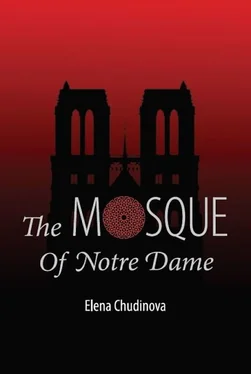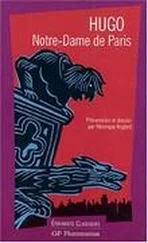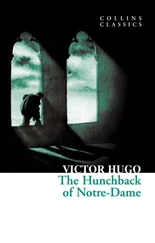Eugène-Olivier did not believe in God for family reasons. The Lévêque family, which had occupied a house in peaceful Versailles for a good ten generations, was once a part of the ruling class.
“We are, of course, plutocrats,” Grandfather Patrice used to say. He had a sharp tongue.
“Other authorities in the Republic do not exist. But your golden calf, in any case, is an aristocrat. The Liberals have demonstrated their cleverness with triple security and electronics, like the CIA—and for what? So that an auditorium of one hundred teens jumping to the sound of rap can’t be infiltrated by the one-hundred-and-first, who isn’t on the list? Let them go ahead and laugh. The purpose of the market is matrimonial. We won’t mix our blood with new money, even if they have more of it than we do.
“What are their millions to our thousands? If one of our own stumbles, thousands of hands will reach out to help him. If the same thing happens to one of theirs, hundreds of feet will go out to bury him deeper. Vespasian was a fool—money does have a smell, after all. Some of it even stinks. Money with a decent smell grows slowly. There are really only two things that can lend dignity to money. The first is time. Money, like good wine, needs to age properly. The second is tradition. Without our own tradition behind us, we are no one.”
The Lévêque family had its own tradition. Some of the women became nuns, but not too many. Men went into the priesthood very rarely—there were too many workers’ and farmers’ genes in them. Nevertheless, from generation to generation, the head of the family, wearing an alb over his three-piece suit, served at festal masses at Notre Dame. The Lévêques were the hereditary altar servers of Notre Dame. This privilege did not come cheaply. They always made contributions for restorations, for benevolent purposes, for the priests’ vestments. This was also a tradition.
Great-great-grandfather Antoine Philippe was the altar server during the time of the Second Vatican Council. Many old acquaintances joined the movement led by Monsignor Marcel Lefebvre in the 1970s. People of traditional orientation, even those who were not especially devout, could not accept the “democratization” of the Mass, the expulsion of the Latin language, the dismantling of the ancient altars.
A schism ensued, and many people left the Church. But not the Lévêque family, although the new form of the Mass, called the Novus Ordo, hurt them more than others. The reason the Lévêque family stayed in the embrace of the Catholic Church was simple. It was called Notre Dame. They could not reject the holy shrine any more than one could abandon any old friend in need. So Antoine Philippe suffered together with the Church. He endured the 15-minute-long Mass, the priest who stood facing the people (instead of the Lord), and the placement of the Sacred Gifts in the hands of the faithful.
“We can flee from the Modernists,” Antoine Philippe used to say, “but the Church cannot.”
It so happened that Patrice was the last altar server of Notre Dame. Grandfather was more than fifty years old when the Wahhabis broke into the church and began to destroy the statues and crosses in it. The priest serving that day quickly removed the nylon gown representing the chasuble he wore over his alb, which was actually a white collar attached to a red cloth with white sleeves at the sides. (The color was red because it was the day of commemoration of a martyr.) The priest had no desire to become a martyr himself. He hastily divested in the sacristy, removed the white collar from his blue shirt, and made his way to the exit. No one tried to stop him. All attention was focused on Patrice Lévêque, who stood in front of them with the most comical of weapons in his hands—the hook he normally used to adjust the high drapes.
He hit two or three Wahhabis on the head, and pushed a few more aside with jabs of the hook. The battle didn’t last more than a few minutes. Grandfather fell, his throat slit from ear to ear, bloodying the pedestal of the Holy Virgin—the one where it is said she was offering the Christ Child a stone lily. (Now that all statues have been destroyed, we cannot know whether the Christ Child was truly stretching his little hands toward the flower of France, or if this detail was added later to make the story more interesting.)
Eugène-Olivier’s childhood was dominated by this scene: the altar server who dies waging a senseless battle for Notre Dame, and the priest who flees, removing his white collar with trembling fingers and later tossing his dangerous plastic garment underfoot—together with his vows.
Eugène-Olivier couldn’t explain why he felt no sadness at his grandfather’s death, and that all his thoughts about God were accompanied by the angry recollection of the traitorous priest. No, God did not exist. Only demons and punishment for such demons existed. His hand unconsciously felt for the secret pocket sewn into his stupid clothes. That was the only thing he believed in.
Pleasantly excited, Zeynab finally entered the shade of the large department store, like a huge aquarium filled with soothing semi-darkness. Of course, the room lit by hundreds of lights only looked dim to someone just entering it from a street bathed in strong sunlight.
“Madame is here to see the fashion show?” asked a store clerk wearing a mauve chador (the official color of the store) pleasantly. “It’s only just begun; there are still plenty of comfortable seats in the showroom.”
Zeynab gladly passed through the open glass doors into a small room where about forty women were sitting around the stage. And there was Aset, with an empty chair right next to her.
“Have you already bought the entire collection or did you leave half of it for me?” whispered Zeynab to her friend as she sat down.
“How did you know it was me?” Aset smiled through the crocheted netting covering her face. The question was rhetorical; the young woman knew no one else in the room could have the same gold-knitted clothing. Silk taffeta imported from China was hard to come by, even in Paris.
A hostess spoke into the microphone, explaining the advantages of the First Rose model. A girl ran out onto the podium wearing ankle-length black pants with gold trim and a matching micro-blouse that left her stomach bare. A casual vest of dark red crêpe de Chine accented her movements. Her lips were smeared in dark red, carefully framed with pencil. In her black hair was a red rose of crêpe de Chine whose petals mingled with her thick curls.
“Oh, how divine!” sighed Aset with resignation. “But only for a real brunette!”
Well, of course, if blonde Aset wore something like that, her husband would run away. He would say talak to her! But Zeynab simply must buy it; such a beautiful garment would make Qadi Malik happy. No matter that she was a little on the plump side; the model wasn’t exactly skinny, either. Zeynab would buy it and then boast in front of Aset.
She glanced at her friend patronizingly, as she did rather often. After all, Aset was only a first-generation true believer from a family of wealthy French industrialists who had managed to convert before the others. They had been friends since childhood and Zeynab, of course, knew about all the skeletons in her friend’s closet. The old, evil woman who had died only five years ago stubbornly called the little girl Annette, even in front of her school friends! Aset would sometimes try to draw her friends’ attention away with her toys, and sometimes she would yell at her grandmother, artfully avoiding her blows. It was quite funny. But in any case, Aset was not even the equal of a Turkish woman; she simply lacked what true Arab families usually have. Something was missing in people who changed their religion, and something would always be missing. They talked convincingly, but when the time came to take a stone and throw it at a giaour , they immediately began shying away and making excuses.
Читать дальше



![Виктор Гюго - Собор Парижской Богоматери [Notre-Dame de Paris]](/books/30985/viktor-gyugo-sobor-parizhskoj-bogomateri-notre-thumb.webp)








